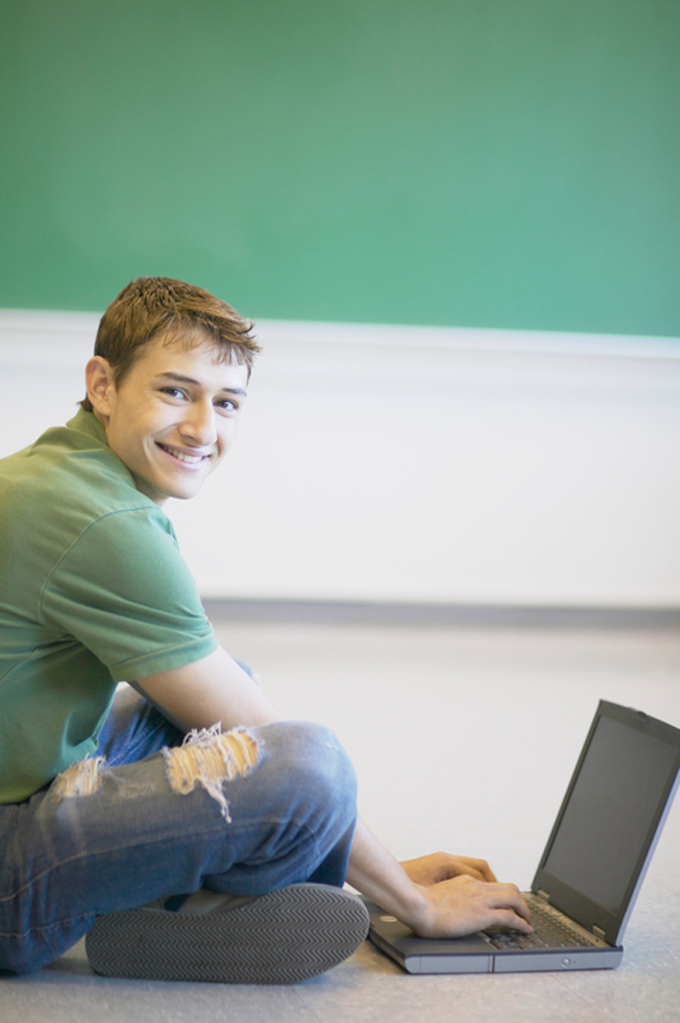 Teaming up with your school librarian can be a great way for teachers to increase meaningful use of technology that strengthens student literacy development. Yet teachers may be unaware of all the ways school librarians can serve as instructional partners. A couple reasons for this could be that educator preparation programs rarely focus on collaboration with school librarians and, more significantly, the role of the school librarian has evolved so much that people’s understanding of their role may be outdated.
Teaming up with your school librarian can be a great way for teachers to increase meaningful use of technology that strengthens student literacy development. Yet teachers may be unaware of all the ways school librarians can serve as instructional partners. A couple reasons for this could be that educator preparation programs rarely focus on collaboration with school librarians and, more significantly, the role of the school librarian has evolved so much that people’s understanding of their role may be outdated.
How can school librarians help in a digital learning context?
School librarians have always been information specialists, but they are especially attuned to helping teachers meaningfully use digital technologies in practice. One excellent go-to resource created by the American Association of School Librarians (AASL) is the 2017 Best Websites for Teaching & Learning: a list of free websites that are useful for media sharing, digital storytelling, communicating through social media, curriculum collaboration, and more. Two popular websites are Buncee, a content creation website for students, and Wizer.me, a questioning and response curriculum tool that librarians have been using in blended learning station rotation activities.
The AASL’s Best Apps for Teaching and Learning is another great resource that adds value to inquiry-based learning in content areas such as STEM, humanities, and reading. Two examples of these apps are Heuristic Shakespeare, a digital book app which pairs text with performance, and Disaster Detector, a game-based app from the Smithsonian Science Education Center that lets players make predictions and analyze and interpret data. The websites and apps on these lists are thoughtfully evaluated and selected by a committee of school librarians who value high-quality resources that encourage student interaction, higher level thinking skills, and increased literacy development.
What can collaboration with a school librarian look like?
School librarians are trained to be instructional partners so they are comfortable with all levels of collaboration. The following are examples of three types of collaboration—aligned, cooperative and conceptual—and what each can look like between school librarians and teachers.
In the aligned phase, the classroom teacher identifies and communicates particular student needs to the school librarian. An example could be to address a weakness in reading comprehension of informational text for fourth graders. The teacher could use a digital resource for informational text developmentally appropriate for those students such as NewsELA. The school librarian can reinforce those same skills during library time by using a research database for upper elementary students such as PebbleGo Next. A benefit of aligned collaboration is that students learn the same skill across digital platforms and content areas.
In the cooperative phase of collaboration, a little more time commitment and communication is necessary. The teacher and librarian get together and decide the best way to teach the same learning objective, such as using Google Keep for note-taking to answer a research question or problem. The teacher and librarian agree to help each other and/or teach jointly for this specific learning objective in the project.
Conceptual collaboration is the most sophisticated type and requires teachers to combine their expertise. It usually occurs for a complex project-based learning activity and involves sustained, collaborative planning from start to finish. A great example of a more sophisticated collaborative project is a high school librarian who collaborated with 11th-grade ELA teachers on a literacy criticism assignment for Cory Doctorow’s Little Brother. The librarian used virtual meeting tools to bring the author and cyber security experts into the classroom. Students not only had access to primary sources but learned interview techniques and were exposed to career options. Although it takes time and planning, the possibilities for meaningful collaboration at this level are exciting.
Connect with a school librarian today and make plans for real world collaborative projects that deepen student learning.
Mary H. Moen is an assistant professor and coordinator of the School Media Program at the Graduate School of Library and Information Studies at the University of Rhode Island. You can find her on Twitter @mary_moen.
This article is part of a series from the International Literacy Association Technology in Literacy Education Special Interest Group (TILE-SIG).